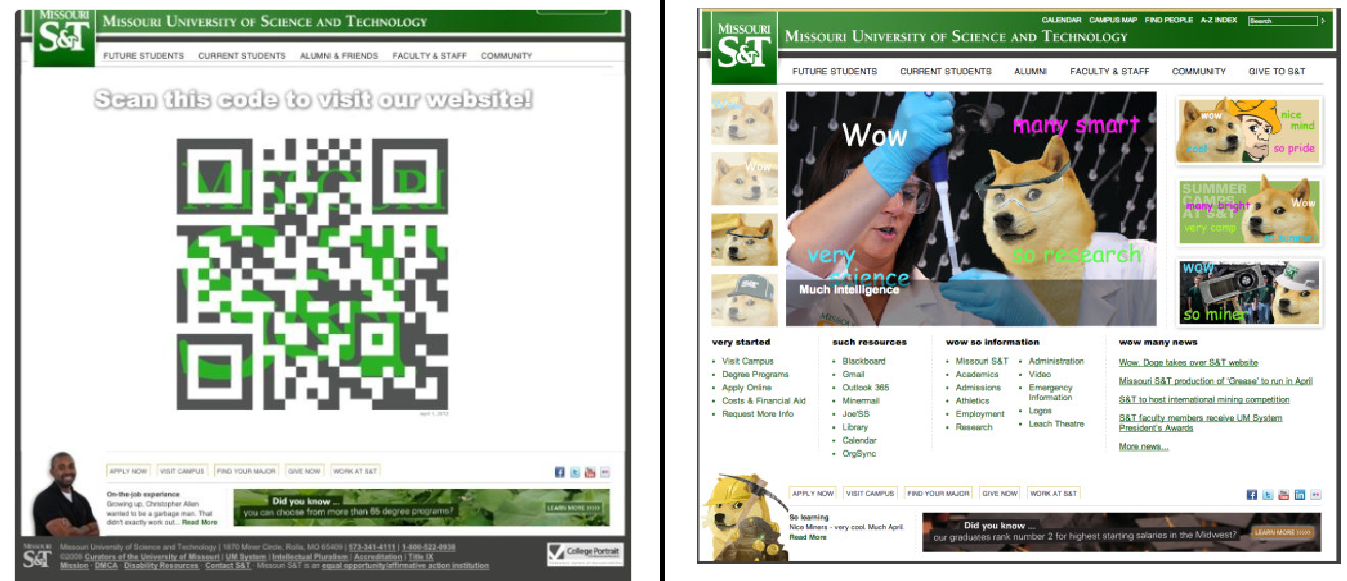You have /5 articles left.
Sign up for a free account or log in.
As floodwaters from Hurricane Matthew surged through Flagler College’s campus in 2016, Holly Hill, director of web and new media services for the Florida institution, realized she had a problem.
Thousands of students, faculty and staff were turning to social media for information and help. But Hill and the one other colleague responsible for manning the college's social media accounts couldn’t keep up.
“We went from pushing out information to all of a sudden becoming a call center,” said Hill.
Flagler’s campus was evacuated prior to the storm. But it was unclear when the campus would reopen. Power went out in most of the administrative buildings, and some students, many from out of state, couldn’t get into their apartments for months, Hill said.
“After Matthew, we really took a big look to improve how we communicated in future years,” she said.
Less than a year later, another hurricane hit Flagler. But this time, Hill was ready. She’d established a Social Media Emergency Response Team and had trained a group of staff involved in communications to be on call to respond to emergencies.
When Hurricane Irma made landfall, Hill’s team congregated in the nearest coffee shop with power and brainstormed what information students would want to know. Inspired by the county’s emergency response operations, this social media “hub” worked because “all the right people were at the table,” said Hill. The team didn’t have all the answers, but they'd learned from Hurricane Matthew just to “answer honestly” even if all they could say was “we’re looking into this.” That responsiveness was reassuring to students, Hill said.
Anticipating that students, parents, faculty and others might want to know if buildings on campus were damaged, Hill encouraged the college president to do a Snapchat video tour showing the damage.
“That was really helpful,” she said. “People are just curious and nervous. I tried to put myself in their shoes.”
Thinking ahead and on your feet is just one of many responsibilities of a college social media manager. In addition to promoting and protecting the reputation of an institution, live-tweeting events such as commencements, and remaining vigilant for threats both online and on campus, they are increasingly expected to play a customer service role -- handling wide-ranging inquiries, directing people to information, responding to complaints and much more -- and to do so efficiently, accurately and quickly.
Although they work in a relatively young and still evolving field, social media managers are becoming an important part of colleges' and universities' brands. Faceless, nameless and often working behind the scenes, how do they do the job can nonetheless "make or break" an institution's reputation.
While it may feel like social media has been around for a long time, “In a lot of respects, we’re still figuring out best practices and the rules of the road,” said Erin Hennessy, vice president of TVP Communications, a public relations agency focused on higher education.
She said managing a university’s social media is “truly a 24-7-365 job” and one that can be “particularly stressful.”
Walking a Fine Line
Finding the right voice for an academic institution is a particular challenge. Universities are serious places. Smart people do important things there. But how do you convey that without putting people to sleep? Is it appropriate to try to be funny? Can you be flippant or witty without seeming snide?
Matt Hames, former communications strategist at Colgate University, said finding the right balance was challenging. “How can you be the voice of a 200-year-old building?” he asked.
Hames said he settled on a voice that was “more Walter Cronkite than Jon Stewart.” But that wasn’t how he started out. Early on, Hames's withering comebacks against bad toothpaste jokes garnered widespread attention. He said that over time, however, he realized he should perhaps be a little more serious and “less wacky.”
Though Hames is often cited as a pioneer in higher education social media management, he announced earlier this year that Colgate had decided to let him go. “They said they wanted to go in a different direction,” said Hames.
He now works for the Utica National Insurance Group.
As the University of Essex in Britain recently discovered, it’s easy for a humorous tweet to backfire. The university's social media manager made fun of another British institution for encouraging students to enroll using voice-controlled Alexa devices. The jibe didn’t go down well. Critics said Essex’s joke was not collegial and “left a bad taste.” The University of Essex subsequently apologized, acknowledging it had “got it wrong.”
Andrew Careaga, chief marketing and communications officer at the Missouri University of Science and Technology, said he likes to engage in some “geek humor” as is befitting a STEM-focused institution like Missouri S&T, but he admits it doesn’t always go down well.
On April Fool’s Day in 2012, Careaga's team replaced the university's homepage with a QR code, with the instruction to "scan this code to visit our website." People were annoyed. They criticized QR codes. They did not get the joke, said Careaga. “That was definitely one that fell flat.”
But two years later, Careaga found success. His team plastered the university's homepage with doge memes -- adding to every image on the site a wide-eyed shiba inu dog, surrounded by expressions such as “wow,” “so research” and “many smart,” in colorful Comic Sans font.
Wired declared that Missouri S&T had “won April Fool’s Day.” Loads of people visited the site. But, Careaga adds, “a lot of people thought we’d been hacked.”

Social media managers need to be sensitive to the environment they are in, said Liz Gross, director of Campus Sonar, a social media and marketing consultancy for higher education institutions. The University of Wisconsin Madison, for example, used to have a pretty cheeky social media persona. “They wanted to be ‘the smartest person in the room,’” said Gross. But as the political climate became more critical of higher education institutions, the edginess was toned down, said Gross.
There are, however, occasions when a little impudence works. Earlier this year, the University of Maryland Baltimore County’s men’s basketball team had an incredible Cinderella run in the NCAA tournament. But it wasn’t just UMBC’s prowess on the court that gained national attention. Off the court, the UMBC Athletics Twitter account was gaining legions of fans. The account was funny, irreverent and, as The New York Times put it, not afraid to “burn, burn, burn” those who had doubted UMBC.
“It was the perfect combination of once-in-a-lifetime circumstances, a creative strategy and leaders who were willing to give the social media team room to run, which paid enormous dividends for the institution,” said Hennessy.
A Stressful Role
The job also has a very serious and sometimes stressful side.
Social media managers can play an important role not only in disseminating information during and after an emergency, but also preparing for one. The University of Michigan, for example, has used Snapchat to educate students about how to respond to an active shooter.
They can often be the first person to see reports of violence, sexual assault or other major incidents on campus, said Gross. But they are “not always equipped to deal with things like that,” she said.
Handling a crisis event is stressful but it can also take a personal toll, said Gross. Social media managers might be the only person monitoring accounts and that means that they can’t really switch off. Intercepting hateful messages all day doesn’t make you feel good, Gross said.
“The internet can be a yucky place.”
Finding a Purpose
It’s taken a while, but universities have started to recognize the importance of getting social media right, said Hennessy.
“It used to be that managers in all sorts of industries, not just higher ed, grabbed the youngest person in the room and said, ‘You’re young, you get this, so it’s yours to manage,’” she said. “Now, smart institutions realize that their brands can live or die on social media and have started to press for significant investments in talent and resources.”
But Gross said that she still encounters many social media managers who have not had any formal training and are not getting much guidance.
“People know their job is to do social media, but when you ask what they are trying to accomplish, you get blank stares,” she said. “There’s often a lack of clear direction.”
Hames said that universities often struggle to set a clear purpose for their social media. In the business world, it’s clear that the purpose of social media is to sell, but in higher ed that kind of naked commercialization is frowned upon.
Though social media can be used to connect students on campus, engage alumni or woo donors, Hames believes that attracting new students should be the goal.
“Right now, schools should be all about the end-of-summer tours, the new class, photos of moving in, everything and anything that might jazz a rising high school senior.”




